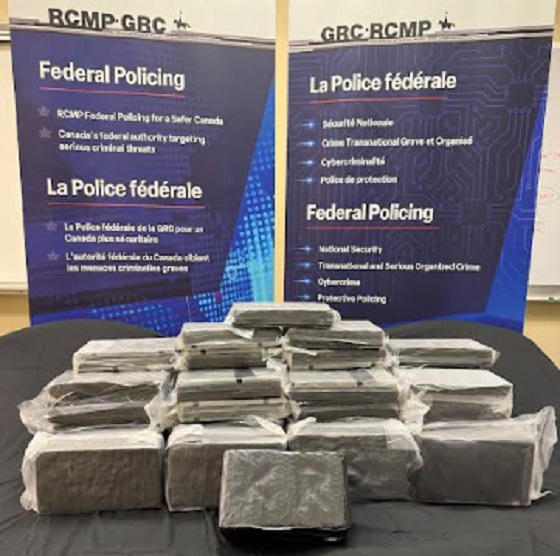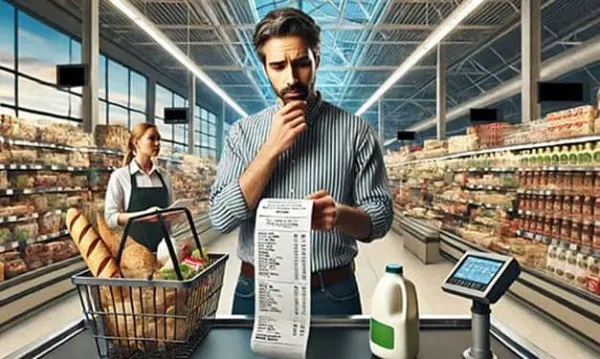Business
Understanding the Nature of Canada’s Fiscal and Economic Challenges
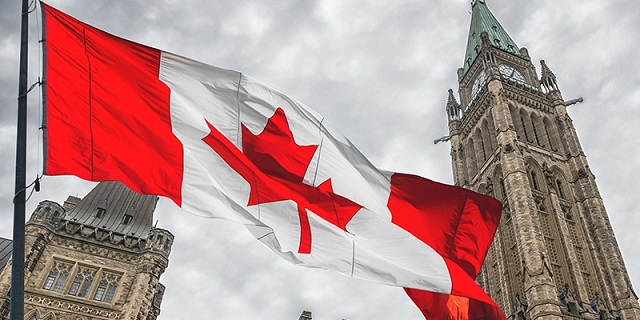
From the Fraser Institute
By Jake Fuss and Jason Clemens
” between 2016 and 2019 (pre-COVID), growth in per-person GDP (inflation-adjusted) was an anemic 0.9 percent. According to one study, among the last five pre-recession periods in Canadian history, the Trudeau period (again, 2016 to 2019) recorded the weakest economic growth “
The Trudeau government was first elected in 2015 based in part on a new approach to government policy, which promised greater prosperity for Canadians based on short-term deficit spending (totaling $25.1 billion over three years), lower taxes for most Canadians (except higher-income earners), and a more active approach to economic development (LPC, 2015). This new policy direction stood in stark contrast to the consensus of the previous 20 years (Clemens and Palacios, 2017). The result has been a marked deterioration in the country’s finances, economic stagnation, and a collapse in business investment. If Canada is to restore its fiscal and economic health, Ottawa must enact fundamental policy reform.
Government spending, taxes, and debt
The Trudeau government has markedly increased spending to finance both new programs and increases in existing programs. Federal spending (excluding interest costs) increased from $256.3 billion in 2014-15 (the year before the Trudeau government took office) to $448.2 billion in 2022-23 (an increase of 74.9 percent) (Canada, 2023a) and a projected $453.0 billion in 2023-24 (Canada, 2023b). Not surprisingly, COVID-related spending contributed to increases in 2019-20 to 2021-22. But in 2022-23 and thereafter, there is no COVID-related spending.
The federal government has used tax increases and large increases in borrowing to finance these spending increases. In 2016, the federal government increased the top personal income tax rate imposed on entrepreneurs, professionals , and business owners from 29 percent to 33 percent. Consequently, the combined top personal income tax rate (federal and provincial) now exceeds 50 percent in eight provinces (with the remaining provinces only slightly below 50 percent) and in 2022 Canada had the 5th highest tax rate out of 38 OECD countries. This represents a serious competitive challenge for Canada’s ability to attract and retain entrepreneurs, investors, skilled professionals, and businesses.
And while the Trudeau government reduced the middle personal income tax rate, it also eliminated several tax credits. The combination of the two policy changes means that 86 percent of middle-income families now pay higher personal income taxes (Palacios et al., 2022). If the analysis also includes increases to the Canada Pension Plan contribution rate, almost all Canadians now pay higher taxes.

The Trudeau government also borrowed to finance its new spending. Figure 1 contrasts the originally
planned deficits with the actual deficits incurred by the Trudeau government (excluding COVID-related
spending) from 2016-17 to 2022-23. The actual borrowing exceeds the originally planned borrowing
every year (except 2021-22), often by significant margins, due to the government’s inability to control
spending growth.
The string of deficits means federal debt (measured as gross debt) has ballooned to $1.9 trillion
(2022-23) and is projected to reach $2.4 trillion by 2027/28, fueling a dramatic growth in interest costs,
which have grown by 53.2 percent (inflation-adjusted) between 2014/15 and 2023/24 and will reach
a projected $46.5 billion in 2023/24. Interest costs now consume substantial revenue that is then unavailable for government services or tax reduction.
Simply put, Trudeau government policy changes have produced large increases in government spending, taxes, and borrowing. Unfortunately, these policy changes have not resulted in a more robust and vibrant economy.
Weak economic growth and collapsing business investment
The broadest measure of living standards is GDP per person, which calculates the total value of all goods and services produced in the economy in a given year (adjusted by the population). As illustrated in Figure 2, between 2016 and 2019 (pre-COVID), growth in per-person GDP (inflation-adjusted) was an anemic 0.9 percent. According to one study, among the last five pre-recession periods in Canadian history, the Trudeau period (again, 2016 to 2019) recorded the weakest economic growth (Clemens, Palacios, and Veldhuis, 2021). Another study found that Canada’s per-person GDP growth from 2013 to 2022 was the weakest on record since the 1930s (Cross, 2023). And per-person GDP in 2022 (inflation-adjusted) had still not recovered from the pandemic losses and was basically stagnant at 2018 levels (see figure 2).
Prospects for the future, given current policies, are not encouraging. The OECD projects that Canada will record the lowest rate of per-person GDP growth among 32 advanced economies from 2020 to 2030 and from 2030 to 2060(OECD, 2021).Countries such as Estonia, South Korea, and New Zealand are expected to vault past Canada and achieve higher living standards by 2060.

According to a recent analysis, Canada’s economic growth crisis is due in part to the decline in business investment, which is critical to increasing living standards because it equips workers with tools and technologies to produce more higher-quality goods and services. This, in turn, fuels innovation and improved productivity (Cross, 2023). There are obvious explanations for the decline in business investment including regulatory barriers, particularly related to the energy and mining sectors (Globerman and Emes, 2021), and government deficits, which imply tax increases in the future, dampening investment today. Business investment (inflation-adjusted), excluding residential construction, has declined by 1.8 percent annually since 2014.
According to a 2023 study (Hill and Emes, 2023), between 2014 and 2021, business investment per worker (inflation-adjusted, excluding residential construction) decreased by $3,676 (to $14,687) compared to growth of $3,418 (to $26,751) in the United States. Put differently, in 2014, Canadian
businesses invested 79 cents per worker for every dollar invested in the United States. By 2021, that level of investment had declined to just 55 cents per worker.
Moreover, the amount of investment in Canada by foreigners has decreased while the amount of investment by Canadians outside of the country has increased. In 2008, the two levels were roughly comparable—$65.7 billion in foreign direct investment (FDI) in Canada vs. $84.6 billion in investment by Canadians outside of the country. However, a sizeable change began in 2015; by 2022, the amount of FDI ($64.6 billion) was significantly smaller than the amount of investment by Canadians outside the country ($102.3 billion).
Finally, while Canada’s labour market has consistently demonstrated its strength and resilience, the labour market numbers hide some concerning trends. For example, between February 2020 (when the pandemic began) and June 2023, private-sector job creation (net) was fairly weak at 3.3 percent compared to 11.8 percent job growth in the government sector (Eisen, Ryan and Palacios, 2023). In other words, the recovery and growth in the private sector following the pandemic has not been as strong as expected.
Conclusion: The Path Forward
There is reason for optimism, however, since many of Canada’s challenges are of the federal government’s own making. The Chrétien Liberals in the 1990s faced many of the same challenges that we do today (Veldhuis, Clemens, and Palacios, 2011). By shifting the focus to more prudent government spending, balanced budgets, debt reduction, and competitive tax rates, the Chrétien Liberals—followed in large measure by the Harper Tories—paved the way for two decades of prosperity when Canada outperformed other OECD countries on economic growth, job-creation, and business investment.
To help foster greater prosperity for Canadians today, the federal government can learn from the Chrétien Liberals, and the Harper Tories. The rest of this series identifies policy options that can increase living standards for Canadians by repairing federal finances, improving tax competitiveness, and lowering economic barriers. These reforms could help build a more prosperous country through the creation of good jobs which would lead to rising incomes for Canadians.
Authors:
Business
Mystery cloaks Doug Ford’s funding of media through Ontario advertising subsidy

Plus! Some tough lessons learned by journalists at all levels – not everyone is telling the truth and there are many people with the same name. Verify.
By now it’s established that Ontario Premier Doug Ford is either an ever so dreamy “elbows up” super hero kinda guy who’s shown US President Donald Trump who his daddy is or …. a ham fisted, narcissistic blowhard with all the finesse of a drunken linebacker crashing through the Royal Doulton.
If you follow social media, those appear to be the options. You choose.
The Rewrite needs your support to hold journalism accountable.
Please become a free or paid subscriber.
His $75 million ad buy attempting to show Americans how Trump is offside on tariffs with the late Republican icon President Ronald Reagan (1981-89) was either, as Ford insists, a triumph, or a disaster of epic proportions. Either way, the result is the Americans broke off trade talks until, well, whenever a very aggrieved Trump next wakes up on the right side of the bed. And the progressive bromance between Ford and Prime Minister Mark Carney looks to be on the rocks, with the latter admitting he apologized to Trump and had advised against the ads. Me? I thought Matt Gurney summarized the situation very well in the Toronto Star.
“The Americans are more than savvy enough to have figured out what we’re up to. They’ve responded to our good cop/bad cop strategy by shooting both cops and then torching the police station.”
The Rewrite, though, is about media, not tugging forelocks and authoring political thumb suckers. So what really made me curious about Ford’s ad spend was whether the premier’s media friends in Ontario were going to get their – what’s that phrase again? – oh, right: fair share.
People may have forgotten but it was only last year when Ford, succumbing to News Media Canada’s lobbying, decided that too much government advertising money was going to American tech companies like Meta and Google and not enough to people who report about him and his opponents. Consistent with the progressive belief that government subsidies can cure any problem, Ford ordered that 25 per cent of the $100 million spent on advertising annually by the Liquor Control Board of Ontario (LCBO), the Ontario Cannabis Store, Metrolinx and the Ontario Lottery and Gaming Corporation (OLG) be directed to Ontario newspapers. And he didn’t stop there. The directive news release made it clear that “the government is also making similar commitments with its own advertising spending, helping to provide even more support for Ontario jobs and promote Ontario culture.”
Word on the street is that this cashapalooza – announced mere months before an election- has been warmly received by Ontario media, so I was already trying to find out who was getting how much when the US ads launched.
Turns out what should have been a simple task is not so easy. The specifics are not to be found within Ontario’s public accounts. So I wrote to Grace Lee, the director of communications in the Premier’s office and then Hannah Jensen, who also works there. No response. Then I tried again. Still nothing. When I asked if the directive “also applies to the Government of Ontario’s recent advertising buy in the United States so that additional government advertising – as is indicated in the directive – worth 25 per cent of the US spend will benefit qualified Ontario media” I got the same cold shoulder.
So, while there was a bit of publicity regarding Ford’s initial decision to subsidize Ontario publishers to the tune of $25 million-plus, no one is providing the details. The publishers must know and the government must know, but they seem to be keeping it a secret. It doesn’t seem likely, but if Ford is faithful to the words and spirit of his 2024 directive, there should be some additional cash flowing to approved Ontario publishers as a result of his Trump tantrum-inducing investment.
Alas, it appears unlikely the public will ever know if that’s the case or which media outlets are benefiting from the premier’s benefaction. That makes these arrangements look all too grubby. Keeping them in the dark, where they’ll stay because that’s the way the politicians and the publishers like it, is only going to further diminish public trust in media. But it’s unclear most of them care anymore.
A phrase in a Juno News report caught my eye last week and it should serve as a cautionary tale. In its report on a large Alberta Independence rally in Edmonton, separatism-friendly lawyer Jeffrey Rath was, understandably, a key source. But he was loosely quoted when referring to a competing Pro-Canada petition on the question of separation. Juno reported that “Rath said Saturday that he heard (organizer Thomas) Lukaszuk was 50,000 signatures short, with a Tuesday deadline.”
The issue isn’t whether Rath said that or not – it’s whether what “he heard” was based on anything other than wishful thinking and rumour-planting. Reporters should not pass along that form of information without verifying because, as it turned out, Rath wasn’t even close. Needing 294,000 signatures, the Pro-Canada petition collected 456,000 or at least 200,000 more than what Juno’s source, Rath, “heard.”
Fine if Rath wants to make a fool of himself. Reporters should be careful not to share the distinction.
A more established title than Juno was in a shambles last week when the venerable Times of London had to quickly pull a story in which former New York Mayor Bill de Blasio was quoted criticizing Democrat mayoralty candidate Zohran Mamdani.
What went wrong? The Times reporter believed he had reached out to de Blasio via email and got a response that questioned Mamdani’s economic plan. The New York Post, also owned by Rupert Murdoch, jumped all over it but when the real former mayor de Blasio responded on X that the report was bogus, The Times stepped back quickly, issuing a statement that it had “apologised to Bill de Blasio and removed the article immediately after discovering that our reporter had been misled by an individual falsely claiming to be the former New York mayor.”
In an interesting twist, the international publication Semafor reported that it had “reached out to a Gmail address our sources believed to be the one used by The Times.”
And:
“You are correct. It was me. The real Bill DeBlasio,” the person who controls the email address responded.
As it turns out, just as there’s more than one Peter Menzies in this world, there’s not just one Bill de Blasio and The Times’ assertion that someone was impersonating the former mayor quickly proved contentious.
The guy who responded to the email turned out to be a 59-year-old Long Island wine importer named Bill DeBlasio.
“I’m Bill DeBlasio. I’ve always been Bill DeBlasio,” DeBlasio (not de Blasio) told Semafor after it knocked on his door. “I never once said I was the mayor. He never addressed me as the mayor.
“So I just gave him my opinion.”
The moral of this story for journos? As the old Chicago City desk saying goes, always “check it out – if your mother says she loves you, check it out.”
In the meantime, we await The Times’ apology to DeBlasio – the one with the wine.
(Peter Menzies is a commentator and consultant on media, Macdonald-Laurier Institute Senior Fellow, a past publisher of the Calgary Herald, a former vice chair of the CRTC and a National Newspaper Award winner.)
Business
You Won’t Believe What Canada’s Embassy in Brazil Has Been Up To
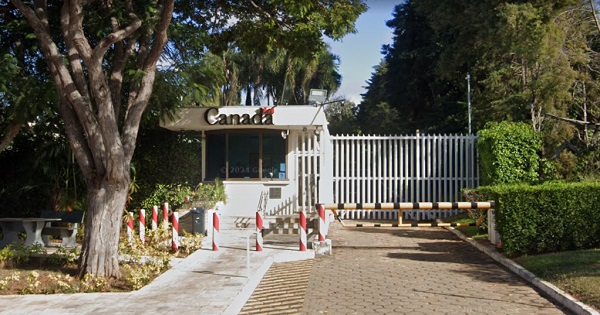
Canada’s embassy in Brazil has been having a terrific year. Well, at least that’s how it might look from the perspective of the 15 or so Canadians who live and work there.
Oh sure, they just faced a conviction in a local court over labour law infractions. And, OK, there are also multiple related cases pending. But the vibe down there must be great.
The Audit is a reader-supported publication.
To receive new posts and support my work, consider becoming a free or paid subscriber.
After all, it never snows in Brasilia and, not counting a half million Canadian dollars for security and “common services”, they spent $1.1 million keeping their various properties running according to a 2024-2025 budget document I’ve seen. Here, courtesy of Google Satellite, is what the embassy itself looks like:
And here’s how that $1.1 million in spending broke down:
To be sure, this isn’t a story about vast crooked fortunes being gained through devious financial scams. I’m aware of no 300ft luxury yachts being quietly moved between Dows Lake and the Bahamas each fall and spring. And it’s certainly reasonable for Canadians on foreign missions to expect to enjoy an above-average lifestyle while serving their country abroad.
But perhaps some of the spending here is getting a bit too close to the line. Take the ten pool covers purchased last year for nearly $25,000 (Canadian) in total. The budget document actually notes how such covers can help with the high cost of replacing water lost through evaporation.
In fact, water costs (totaling $103,000 that year) have been rising: they’re 20 percent higher than fiscal year 2022-2023. So it does seem that someone on staff is aware of the problem and is trying to address it. But a simpler solution might involve just shutting down at least some of the pools (there’s no way they need 10 covers for just one pool) or switching to using trucked-in water for the pools (which is supposed to be cheaper).
And how about the $16,900 spent on a Rational iCombi Pro Xs 6 2/3 220V Mono Elétrico oven for the official residence? Nice. But that’s around ten times the cost of a standard high-end home oven. Add to that the $2,140 spent on a KitchenAid 6.6L, Espresso Machine, Pasta Maker, Blender, and Electrical Slicer.
Don’t you just hate it when everything breaks down at the same time?
I realize that, in the grand scheme of things, nothing here feels all that evil. And I know it’s not fair to peer over people’s shoulders and judge their actions from such a distance. But it certainly does look like here’s yet one more Global Affairs Canada operation that’s missed the memo on the need to tone down public spending.
The Audit is a reader-supported publication.
To receive new posts and support my work, consider becoming a free or paid subscriber.
-

 Business2 days ago
Business2 days agoBank of Canada governor warns citizens to anticipate lower standard of living
-
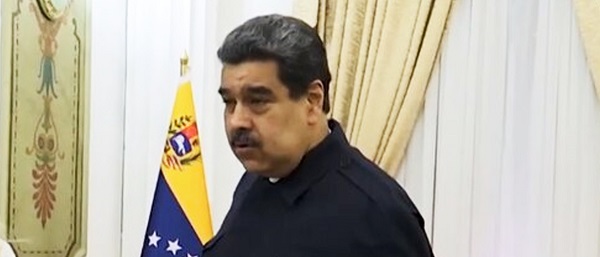
 International2 days ago
International2 days agoUS Reportedly Weighing Military Strikes On Narco Targets Inside Venezuela
-

 Alberta2 days ago
Alberta2 days agoGondek’s exit as mayor marks a turning point for Calgary
-

 International2 days ago
International2 days agoSagrada Familia Basilica in Barcelona is now tallest church in the world
-

 Agriculture2 days ago
Agriculture2 days agoCloned foods are coming to a grocer near you
-
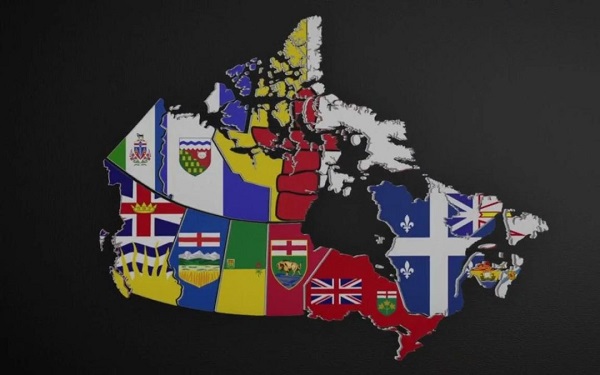
 Fraser Institute2 days ago
Fraser Institute2 days agoOttawa continues to infringe in areas of provincial jurisdiction
-

 Business13 hours ago
Business13 hours agoMystery cloaks Doug Ford’s funding of media through Ontario advertising subsidy
-

 Crime2 hours ago
Crime2 hours agoPublic Execution of Anti-Cartel Mayor in Michoacán Prompts U.S. Offer to Intervene Against Cartels











